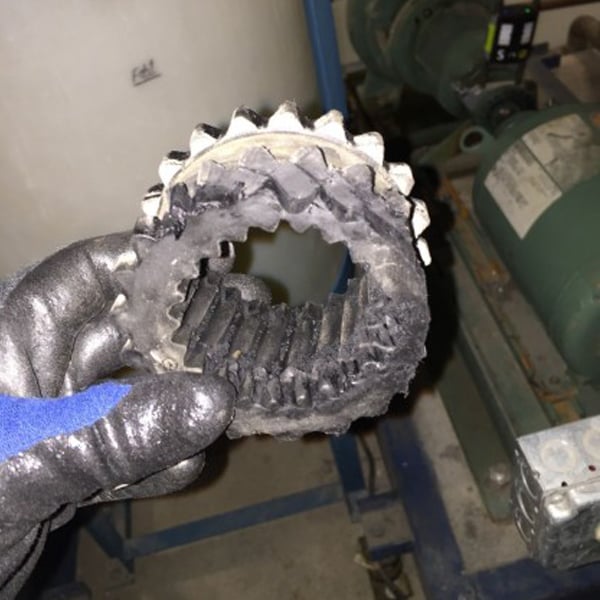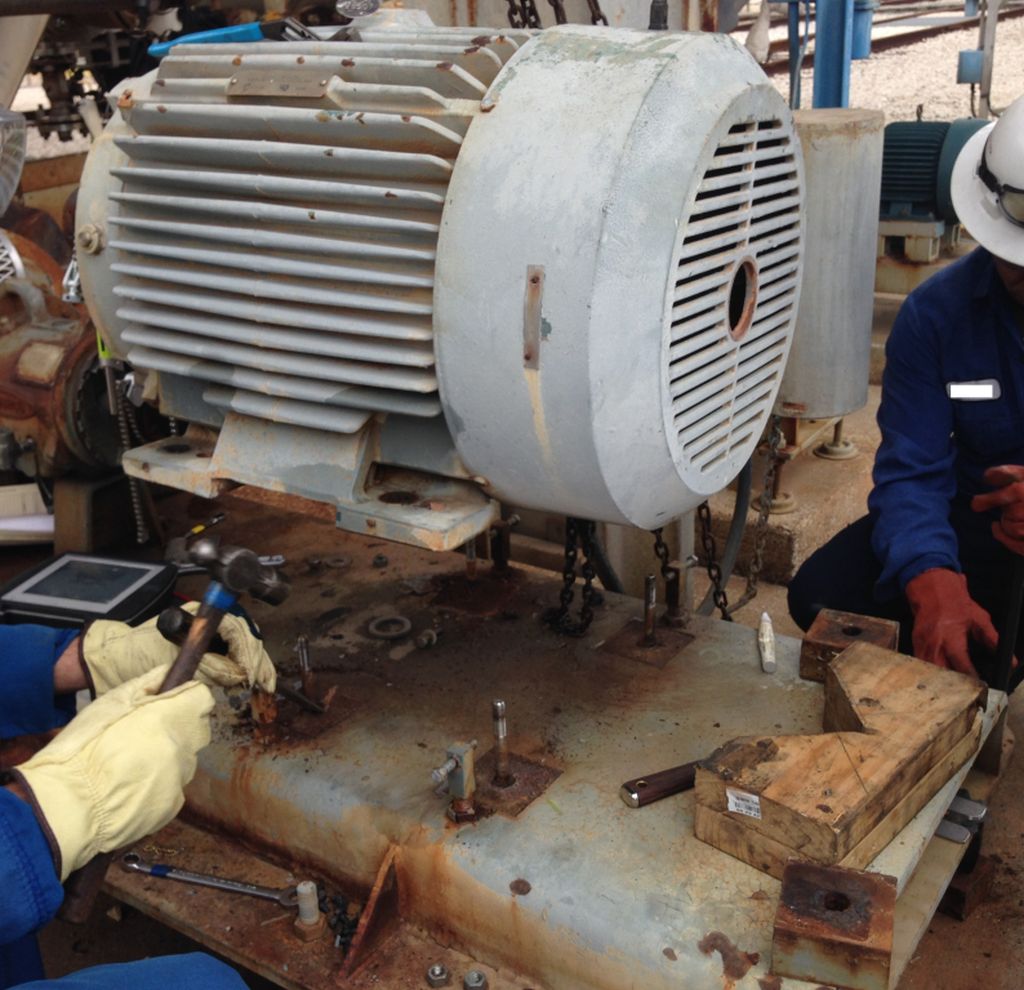Alignment Tips: It’s all about the Base

One of the biggest problems facing maintenance personnel in the shaft alignment business is the quality of the equipment base. Poor mounting base or platform construction will almost always result in machine movement. If the moveable machine (or the stationary) is not mounted to a solid platform capable of withstanding the weight of the equipment and also strong enough to remain rigid under the rotational torque of the motor, the alignment may not remain in tolerance resulting in poor equipment performance and excessive coupling wear. Precision shaft alignment may not even be possible at all.
Pump skids and platforms that are under designed and built out of inferior materials typically have excessive flexibility in the system. Often, the inferior base construction is due to system upgrades and modifications, such as the addition of larger more powerful motors or the relocation of equipment to a location not sufficient to support the weight and torque of the motor.
Factors that will affect base quality and allow machine movement.
- 1) Insufficient or thin metal construction of the mounting platform allowing flexibility in the skid.
- Incorrect material or improper mounting system allowing flexibility or a non-sturdy mounting surface.
- Old, aging, cracked or crumbling concrete and grout materials.
- Rusted base hardware.
- Excessive vibration.
- Excessive debris and dirt.
- Excessive shims or inconsistent use of spacer plates.
Here are several pictures that represent poor or improper mounting methods. These are representative of common encountered when performing precision shaft alignment training. Although it may be possible to bring equipment like this into alignment while not running, it is very likely that all of these systems would twist themselves out of alignment during running time. The coupling pictures are from equipment that seemed properly aligned, but twisted out of alignment upon running quickly destroying the coupling inserts due to dynamic torquing from the flexible bases.
*This article was originally created by James Pekarek

